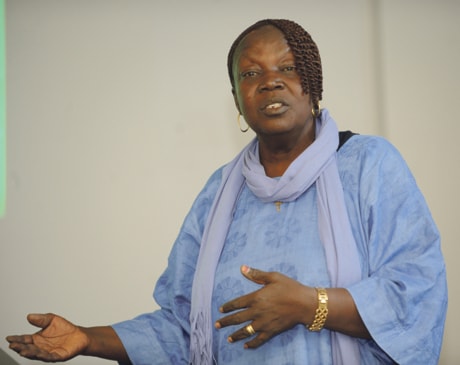Westerners associate Sierra Leone with blood diamonds and a vicious civil war that has killed thousands of people.
While a peace agreement was signed in 2002, there’s another kind of scourge sweeping Sierra Leone — one in eight women in that African country are dying in childbirth.
Bev Carrick said the scope of the tragedy is put into perspective when considering that only one in 11,000 women die while giving birth in Canada.
To stop the pregnant women of Sierra Leone routinely dying of bleeding, high blood pressure and infection, Carrick, executive-director of CAUSE Canada (which stands for Christian Aid in Under-assisted Societies Everywhere) spoke to two Red Deer church groups this weekend about the need to construct more birthing huts in the country.
These simple four-room structures with cement floors and metal roofs, can be built and furnished for $3,000 each, said Carrick, of Canmore.
They would be staffed by a nurse and midwives who would assess the progress of high-risk pregnancies, and would prevent “hundreds and hundreds of women from dying one of the most painful of deaths,” added Carrick, who believes Canadians should care because the world is shrinking.
“We are our brothers’ keepers, our sisters’ keepers, and these women, daughters and sisters are only a plane ride away.”
Theresa Benjamin, a midwife from Sierra Leone, spoke to local groups at Sunnybrook United Church and First Baptist Church on Saturday and Sunday of the pain she feels whenever she hears of another childbirth tragedy.
“A midwife is like a mother, and there’s no mother who likes to see a child die or get sick,” Benjamin said in an earlier interview.
In Sierra Leone, some cultural factors add to birthing problems.
Many girls, married too young, get pregnant at 13 or 14, Benjamin said, “They are not fully developed. Their bones are not strong.”
Carrick said a circumcision practice known as female genital mutilation, is still commonly done to pubescent girls. The smaller genital opening and scarring that result cause more tearing and bleeding during childbirth.
While some tribal chiefs have outlawed this on girls younger than 18 and older girls who don’t give permission, Carrick said the practice persists because some consider uncircumcised girls to be unmarriageable.
But the biggest factor is the distance to health care facilities. Benjamin said women in remote villages can’t get medical help quickly once problems become apparent. That’s why community birthing huts are so valuable. Women with high risk pregnancies would be spent by a midwife to a birthing hut a few weeks before their delivery. These women could bring their young children with them.
If a nurse monitoring their progress decides a C-section is necessary, a vehicle will transport the women to hospital.
Benjamin said someone with a uterine rupture can survive when a hospital is nearby, but “travelling in a hammock to a health care centre can cause more damage.”
The midwife is thankful Canadians care about women in her country. “Any dollars will go to a worthy cause, and the Lord will pay them back for it,” she said. Donations can be made on-line at www.cause.ca or by calling 1-888-552-2873.
lmichelin@www.reddeeradvocate.com
